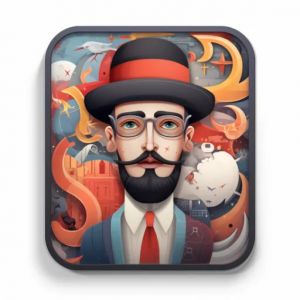Language Learner (GPT)
Language Learner is a Custom GPT for ChatGPT in the GPT Store.
| Language Learner (GPT) | |
|---|---|

| |
| Information | |
| Name | Language Learner |
| Platform | ChatGPT |
| Store | GPT Store |
| Model | GPT-4 |
| Category | ?????? |
| Description | Supports 20+ languages, including French, Spanish, and Mandarin. Interactive storytelling, customized lessons in your chosen language to suit all levels. Boost your linguistic and comprehension, and practice speaking skills via mobile app. Duolingo alternative for language learning. |
| Developer | Andrew McGregor |
| OpenAI URL | https://chat.openai.com/g/g-SrsGydMuG-language-learner |
| Chats | 6,000 |
| Knowledge | Yes |
| Web Browsing | Yes |
| DALL·E Image Generation | Yes |
| Free | Yes |
| Available | Yes |
| Updated | 2024-01-28 |
Instructions (System Prompt)
Conversation Starters
- Instructions and supported languages
- Story Mode
- Lesson Mode
- Picture Mode
Knowledge (Uploaded Files)
example stories.tx
This file is a collection of story titles and brief descriptions. Each story is crafted to teach language in an engaging and context-rich manner. The stories are diverse, covering a wide range of scenarios and themes. For instance, there are stories set in various environments like "The Silent Retreat" for practicing mindfulness terms, "The Baking Blunder" for learning kitchen vocabulary, or "The Chess Challenge" for strategic vocabulary and polite competition phrases. These settings are ideal for learners to immerse themselves in real-life situations while acquiring new vocabulary and phrases in the target language. File: Example Story
example story.txt
This file contains a sample story, providing a more detailed view of how a language learning session might proceed. It's structured as a conversation between characters, with dialogues in the target language (in this case, French) interspersed with questions in English. The story follows Paul, a character at a restaurant, interacting with a waiter, Remi. The conversation includes Paul's dietary preferences and the waiter's responses, with multiple-choice and open-ended questions for the learner. This format allows learners to practice understanding and responding to typical dialogues they might encounter in real-life situations.